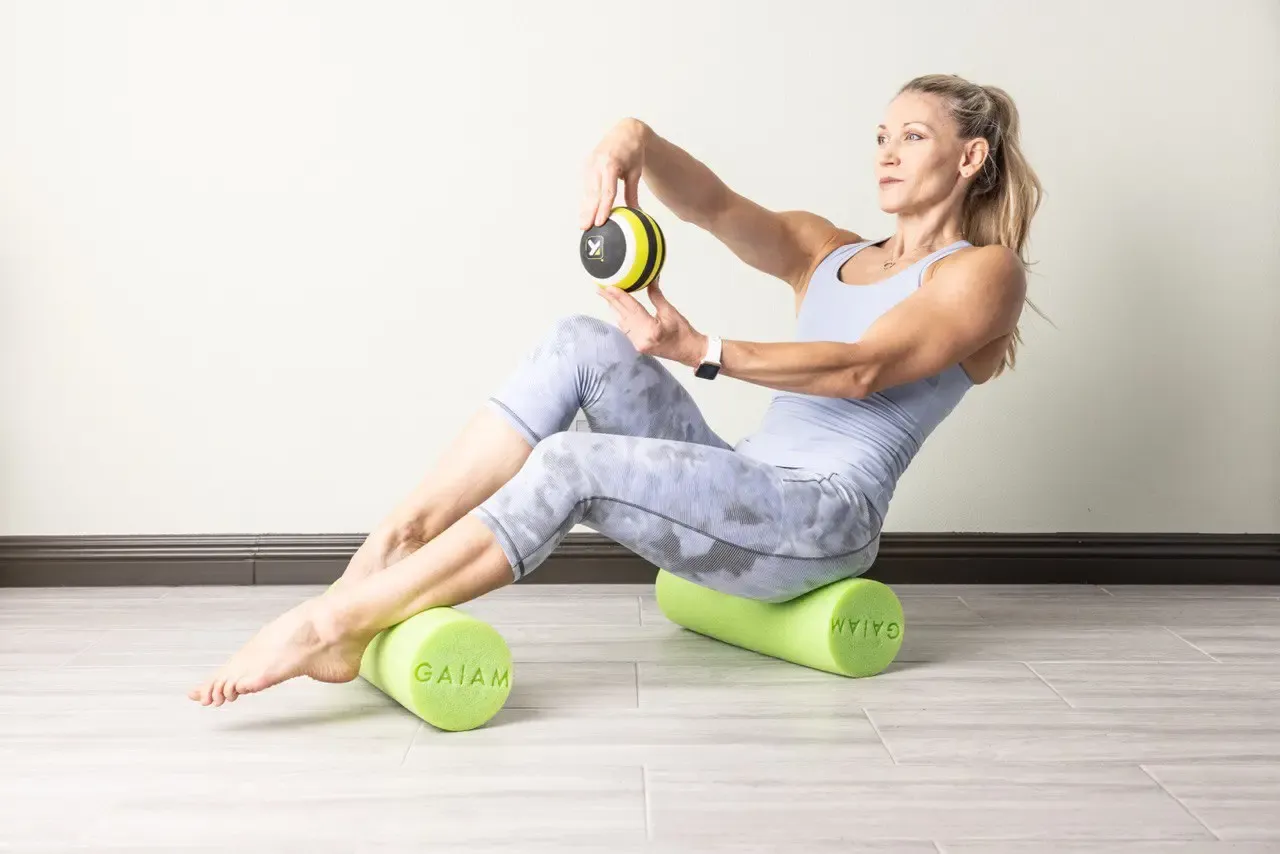
MFR is a unique and accessible method of relaxing muscles and fascia at home. The technique is aimed at warming up before a workout, reducing fatigue during exercise, and minimizing the recovery period afterward.
The term “myofascial release” became widely known in the U.S. during the 1980s. According to American trainers, nothing warms up the muscles or relieves pain quite like this method. Its main advantage is that it is effective and available to everyone. Today, MFR workouts have gained popularity all over the world—many renowned fitness trainers include it in nearly all group sessions. And rightly so, because MFR should become a habit and as automatic as brushing your teeth daily—this way, we help our bodies stay healthy longer and better cope with various physical demands.
What is MFR?
Myofascial release is a method of self-massage using your hands or various equipment. The word “myo” comes from Greek and means muscle, while fascia is an important part of the musculoskeletal system that aids in movement, transmits nerve impulses, and is the first to absorb and soften impacts. “Release,” from English, means separation or liberation—and this fully reflects the essence of the method and helps explain what MFR is.
Its benefits in everyday life
MFR helps separate so-called “stuck together” and immobile muscles. A reasonable question arises: “What do they have to do with anything?” The point is, muscle fibers are covered in fascia like the segments of a mandarin orange, allowing smooth movement during contraction and relaxation—the muscles “glide” over each other. But if the fascia are stuck together, we can no longer talk about a healthy body. So, the person’s task is to help themselves and “wake up” the muscles that are “asleep.”
Let’s take a look at the main indications for MFR:
- before, during, and after the main workout;
- muscle spasms in people with a sedentary lifestyle;
- muscle hypertonicity.
We’ll also take a closer look at what MFR exercises with a foam roller are and how to make them as effective as possible at different stages of your workout.
Before the Main Workout
MFR should be done before a workout briefly, as a light warm-up. At this stage, it’s very important not to overload the body but simply to warm up the muscles.
If done correctly, a person will experience:
- reduced pain;
- decreased muscle stiffness and fatigue;
- improved flexibility and body awareness;
- stimulated lymph flow;
- tissue recovery.
MFR makes soft tissues more elastic, improves joint mobility, reduces the risk of injury, and makes workouts more effective. It helps the body utilize its full range of motion and engage different muscle groups—something you can feel right away. The effect can be felt from the very first session and only increases with time.
MFR can be done independently or with a partner. Various techniques are used, with the most popular being those involving a foam roller:
- Active rolling up and down
- Fixing the roller on a trigger point
- Moving the limbs while keeping the roller fixed
- Rolling across the muscle (side to side)
To make your training as effective as possible, you shouldn’t limit yourself to just one method.
During the Workout
Doing MFR during training is useful for minimizing fatigue and increasing the body’s performance.
After the Workout
An MFR session is a great way to “calm down” the muscles by:
- reducing soreness and heart rate;
- preventing discomfort and the formation of painful spots;
- improving tissue nutrition and hydration;
- lowering the risk of fascial and muscular adhesions.
The duration of an MFR session after a workout can range from 10–15 minutes up to an hour. With regular practice, 10 minutes is enough. As a result, muscles reach an optimal balance between length and tension. Sleep and overall well-being improve. According to people who regularly practice MFR, the benefits are impossible to miss.
Contraindications for MFR
Despite its overall benefits, MFR has some contraindications that should be considered beforehand. These include:
- varicose veins;
- osteoporosis;
- hemophilia;
- cancer;
- inflammatory conditions;
- skin diseases;
- thrombosis;
- open wounds;
- fractures.
Relative contraindications include pregnancy and breastfeeding.
MFR for Rehabilitation and Warm-Up
Myofascial release is an effective sports massage technique. It adds flexibility and relieves pain. During the rehabilitation period, MFR can be done using massage balls, rollers, or other fitness tools. If used for warm-up, the load should be gentle.
MFR is beneficial for everyone, but especially for amateurs more than professional athletes.
It’s also highly effective in rehabilitation settings. In this case, it involves an intensive massage technique based on applying pressure to the muscles. Professional massage therapists use their hands, elbows, and palms. However, for self-massage, tools like massage balls and rollers work well.
When using MFR for rehabilitation (as with warm-ups), it’s important not to push into intolerable pain—this is one of the most common mistakes. Some discomfort is normal, especially when you're just starting to explore the world of MFR. It’s essential to remember that MFR is also a form of training, and tissues need time to adapt to this new type of load.
There are a few simple rules to perform MFR safely and effectively:
- move slowly and smoothly;
- never hold your breath;
- gently and gradually increase the load—your body weight and duration;
- use minimal pressure on sensitive areas.
Conclusion
If you have tight muscles or soreness after intense workouts, MFR can help. Not only does it enhance post-workout recovery, but it can also become a core method for combating restricted mobility. With regular MFR practice, one can return to normal movement and improve endurance and flexibility.
The main goal of MFR self-massage is to release excess muscle tension and improve the elasticity of the fascia—the connective tissue that surrounds muscles. The effect will not go unnoticed: your main workouts will become more comfortable and productive.
Your fitness coach, Alevtina Titarenko 😉